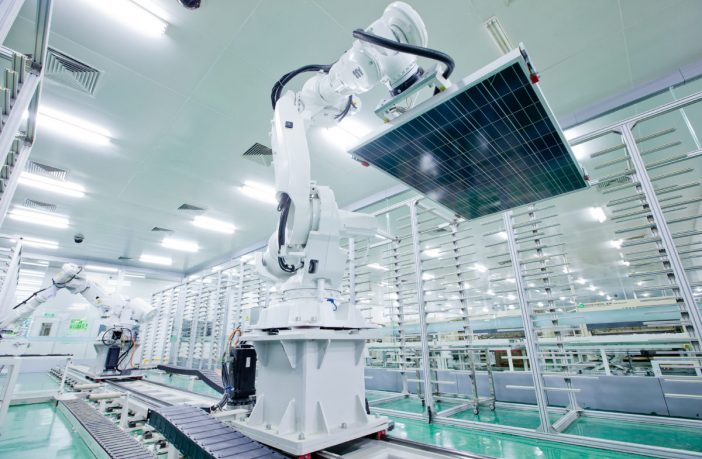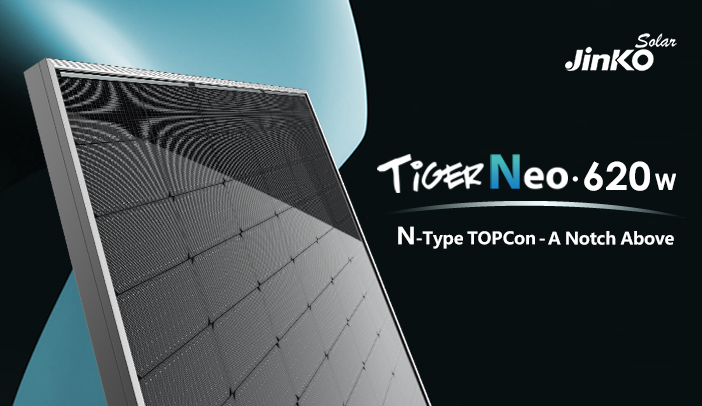- Last Friday, JinkoSolar released its quarterly report, announcing the latest progress of its N-type TOPCon cell.
- The company has a successfully mass-produced cell with an average efficiency of up to 25%, and a good yield rate equivalent to its PRRC process their Jianshan and Hefei factories.
So far, Jinko has become the first solar module manufacturer to have a 10GW scale capacity of N-TOPCon 25% efficiency cell. Based on these cells, the rated power of its N-type TOPCon Tiger Neo module containing 144 half-cut cells can reach 590W with maximum efficiency of up to 22.84%. In addition, embedded with these cells, Tiger Neo presents a multitude of enhanced advantages. For example, the bifacial factor of 75-85%, represents 30% more productivity from the rear side of the panel compared to PERC and other technologies. The temperature coefficient is -0.29%, and operating temperature is −40°C to +85°C, the maximum ambient temperature is 60°C which means that Tiger Neo is perfectly suited for installation across the globe.
Related news: JinkoSolar sets new world record for N-Type solar cell efficiency at 26.1%
Different from the semiconductor industry, Moore’s Law seems not to slow down, despite the technology and process complexities escalating at each level. According to the published roadmaps from various PV makers, for now, almost all Tier 1 manufacturers have planned to extend to N-Type, particularly the TOPCon process which is equivalent in terms of specs to HJT but much more affordable and quality, and reliable.
Beyond 2022, the roadmap is quite clear. For this timeframe, the mainstream solar PV manufacturers will go N-type and adopt TOPCon technology because there are several technical and economic roadblocks with HJT which might being too expensive or could grind to a halt because very few companies will be able to afford it. The manufacturing costs of HJT will probably be much higher than TOPCon. In the contrast, N-TOPCon panels can satisfy almost all market segments demanding the highest levels of performance at a very competitive price.
JinkoSolar’s newest Tiger Neo panel will be top-of-the-line when it comes to efficiency. Based on 25% efficiency TOPCon cell, the 144-cell panels offer an industry-leading 22.84% efficiency and deliver one of the world’s most powerful panels for C&I and utility use rated maximum at 590-watt with size alike, meaning your panel makes more electricity per square foot than with any other commercially available solar. N-type TOPCon technology also allows the Tiger Neo panels to work efficiently even in low light, high temperatures, and cloudy conditions. The lowest degradation rates in the solar industry (1% for the initial year, and 0.4% per year for 29 years) enable it to offer 30 years warranty in confidence.
So how does the industry continue to scale? The question is very clear, given the enormous costs of HJT or other mixed technologies, why bother developing it when TOPCon has combined top performance and cost-effectiveness perfectly already?
Author: Bryan Groenendaal

















